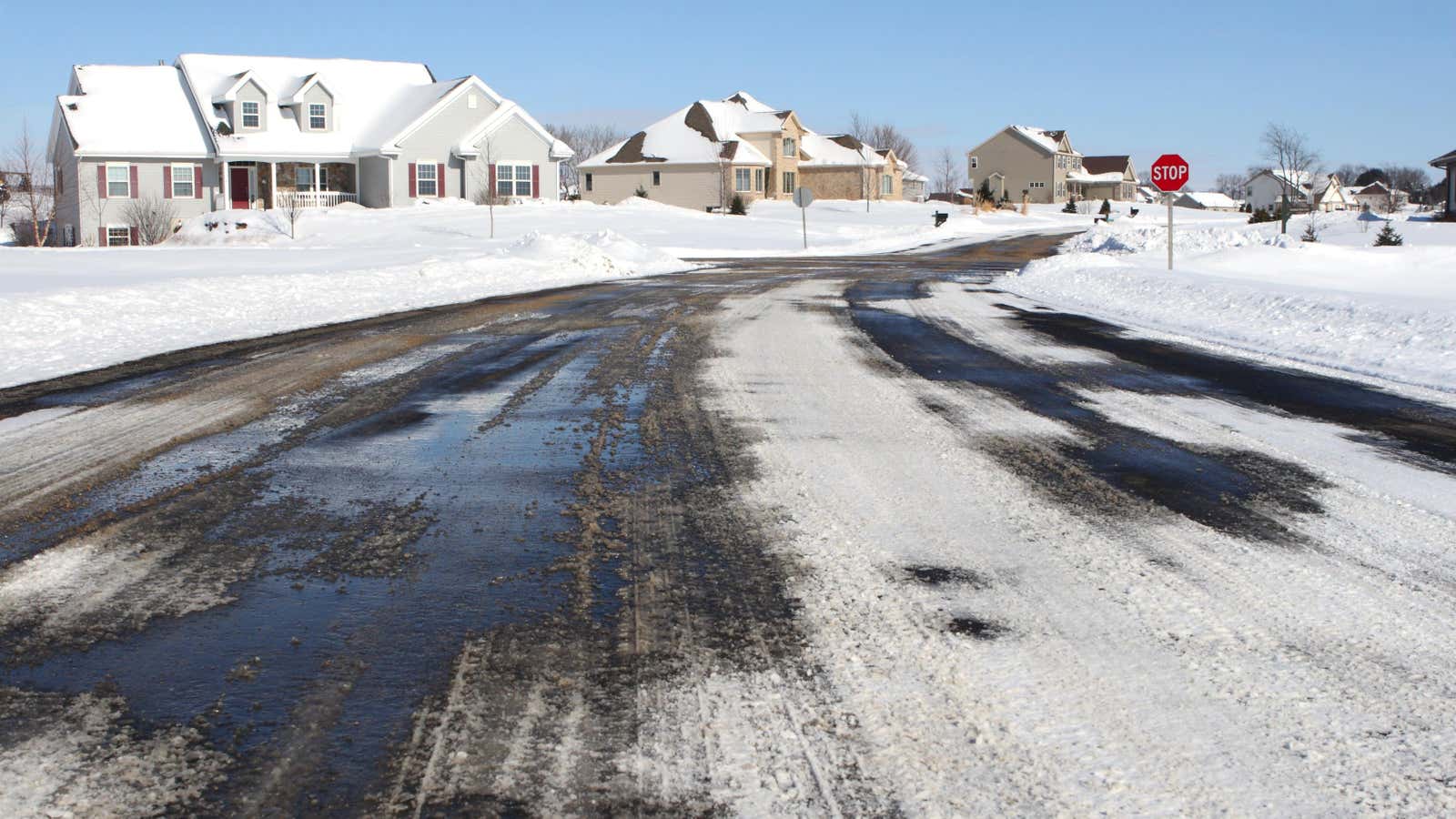How to Get Rid of (and Prevent) Frost on Your Driveway and Walkways

Black ice is a thin, barely visible layer of ice that often camouflages itself under water and can really ruin your day if you stumble upon it unexpectedly. This usually occurs when there is moisture in the air and the temperature rapidly drops below freezing, creating a film of ice on the coldest surfaces. While black ice is a threat, it can be both avoided and dealt with once it forms.
How to prevent ice formation
Keeping an eye on the temperature outside is the first step to keeping ice under control. If the temperature is above freezing by the time you need to walk or drive down your driveway, you may not need to de-ice at all – you can just wait for the sun to do its job. As long as the surfaces you worry about are above 32 degrees, you have nothing to worry about.
One way to proactively prevent icing is to shovel regularly to keep melting snow from hitting surfaces and freezing. Of course, snowmelt isn’t the only source of water, so this method isn’t foolproof: You can also pretreat driveways and walkways with a liquid ice melter, or use a granular product like magnesium chloride for pretreatment, which will cut down on ice. which can form overnight (and reduce your work in the morning). Although rock salt is a common ice and snow pretreatment, it is not recommended for use on concrete as it can damage the surface. Also, do not allow pets to lick the treated surface and rinse their paws after they have walked on it. While these products are safer than other de-icing chemicals, they are still not suitable for ingestion by pets.
How to get rid of black ice
If you skipped window pretreatment, you can use magnesium chloride after the ice has formed to melt it. If it’s hard to get to spread the de-icer, sprinkle in some cat litter, sand, or sawdust to increase grip so you can walk more safely. (These materials can also be useful for unhitching a vehicle if there is ice behind the tires.)
To make cleaning and spreading the de-icer easier, choose snap-on ice soles for shoes or boots that do not slip. This method of getting traction has the added benefit of not leaving any materials or chemicals on the ground, so it can be a great option for people with pets or small children. The downside is that the sole won’t actually melt the ice, and the non-slip sole isn’t reliable.
If you live in an area where ice is a common problem, you may also want to consider using a de-icing system that uses heat to melt ice from walkways and vehicles. Heated grills or mats can raise the surface temperature of your ice rink. While useful for limited areas, it is impractical for larger applications due to the sheer amount of material you will need to cover the ground. However, this is a great solution for accessing your front or garage door, especially if your area regularly gets ice in the winter.